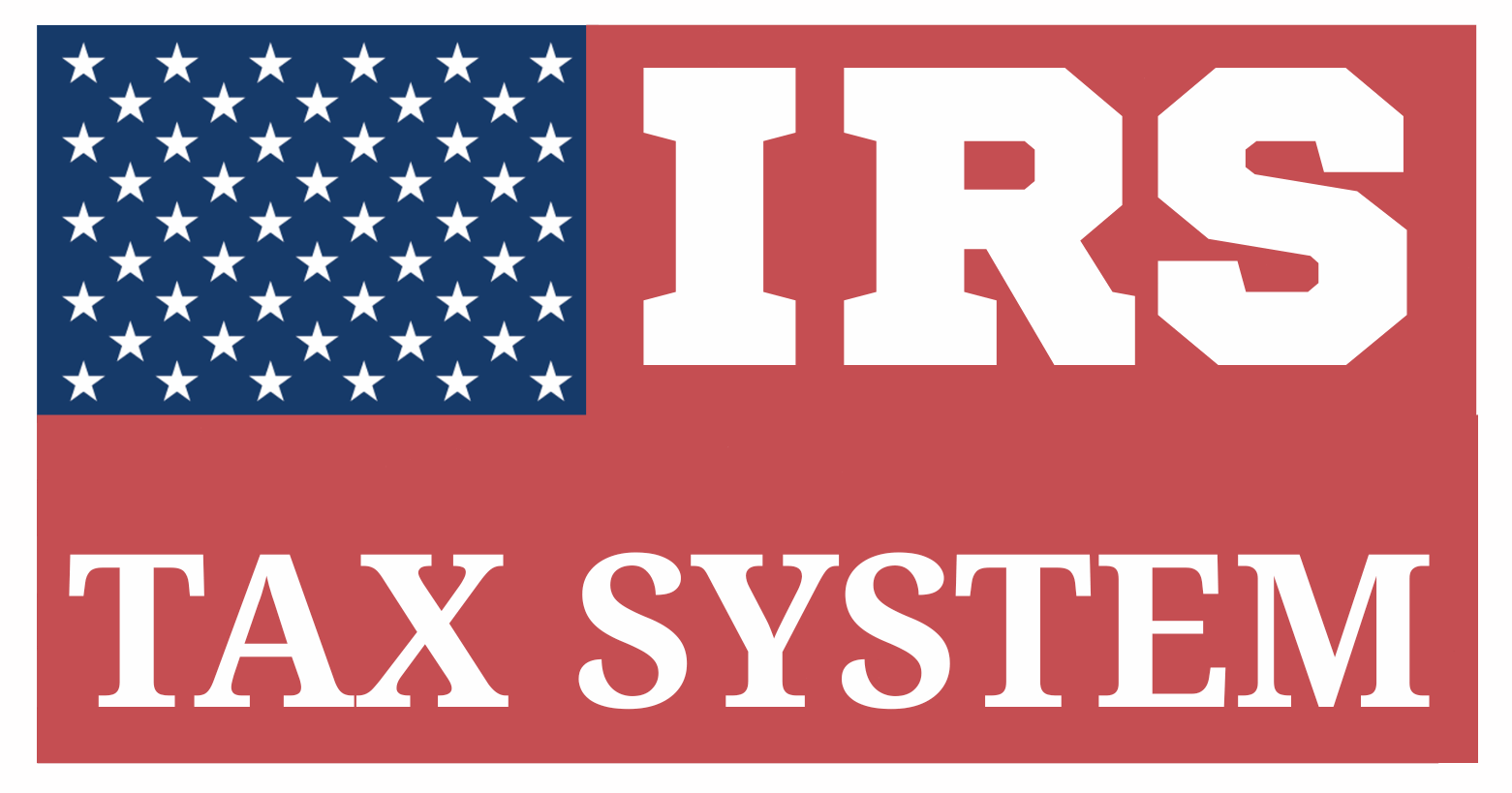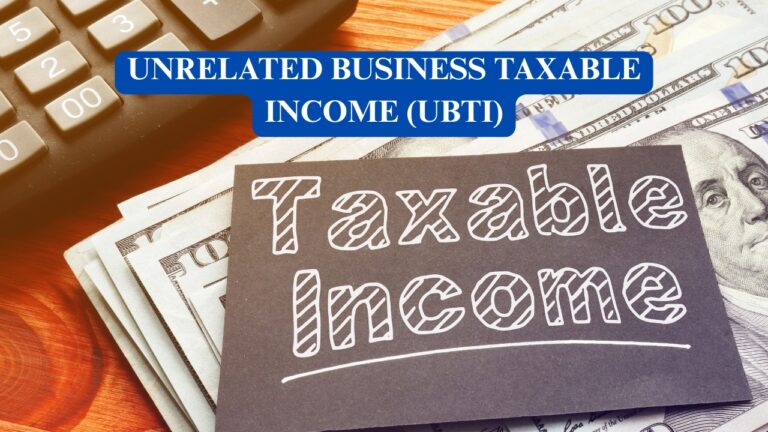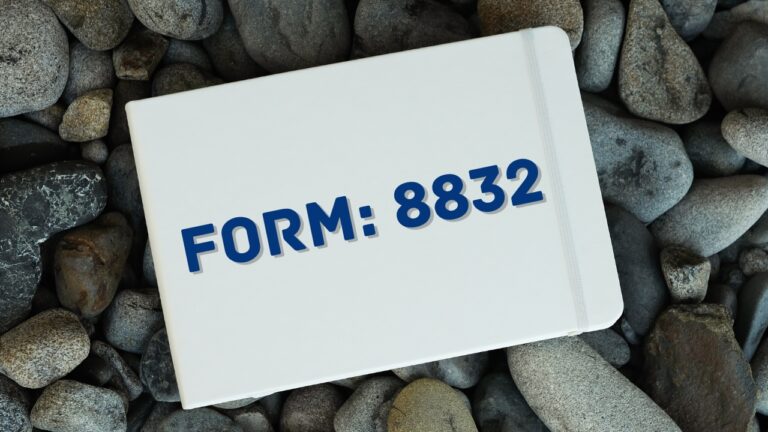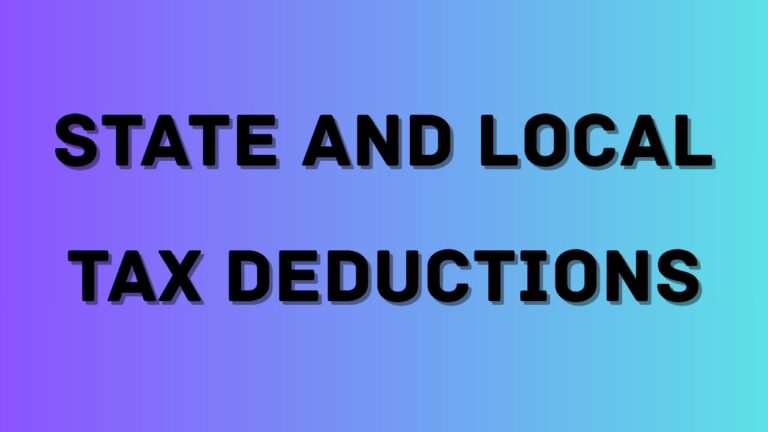Qualified Business Income (QBI): The Perfect Review In 2025
Table of Contents
Qualified Business Income (QBI) — Ultimate Descriptive Guide (IRC §199A)

Qualified Business Income (QBI) is defined as the net amount of income, gain, deduction, and loss generated by a qualified trade or business that is conducted within the United States. This income must be attributable to a pass-through entity, such as a sole proprietorship, partnership, S corporation, or certain trusts and estates.
QBI is not a credit but a deduction from taxable income, reducing the amount of income on which tax is calculated. However, it is not an “above-the-line” deduction and doesn’t reduce Adjusted Gross Income (AGI). Rather, the deduction is applied after determining adjusted gross income, but before arriving at taxable income.
QBI is a key component of the Section 199A deduction—commonly known as the 20% pass-through deduction—It enables eligible individuals to claim a deduction of up to 20% of their qualified business income, thereby reducing the income subject to tax and lowering the total amount they owe.. This deduction is available from tax year 2018 through 2025, unless extended or modified by Congress.
What Is Included and Excluded in Qualified Business Income (QBI)? — A Deep Dive
PART 1: What Is Included in QBI?
Qualified Business Income refers to net business income generated domestically through eligible pass-through entities, which flows through to individual tax returns.
1. Net Qualified Trade or Business Operating Earnings
- Definition: The ordinary income remaining after deducting ordinary and necessary business expenses, such as rent, utilities, wages, supplies, and depreciation.
- Source Forms:
- Schedule C (Sole Proprietor)
- Schedule K-1 from Form 1065 (Partnerships)
- Schedule K-1 from Form 1120-S (S corporations)
- Example: If a sole proprietor earns $120,000 in gross receipts and deducts $40,000 in business expenses, their QBI is $80,000.
2. Income from Partnerships and S Corporations
- This includes your share of the entity’s business income, but not guaranteed payments or shareholder wages.
- Key Rule: Only the ordinary portion of pass-through income qualifies. Items like capital gains or dividends reported on K-1 are excluded.
- Example: A partner’s distributive share of a law firm’s net income is $150,000, but $30,000 of that is from capital gain. Only $120,000 counts toward QBI.
3. Qualified Rental Real Estate Income
- Can be treated as qualified business income if the rental activity meets the criteria of a trade or business under Section 162.
- Safe Harbor (IRS Notice 2019-07): To qualify, landlords must:
- Provide 250+ hours of rental services annually
- Maintain detailed records (e.g., time logs, expenses)
- Keep separate books for each property
- Example: A taxpayer who owns and manages four rental properties full-time qualifies for QBI if the rental activity meets these criteria.
4. Income from Publicly Traded Partnerships (PTPs)
- Only ordinary income components from PTPs qualify.
- Example: If a PTP reports $10,000 in business income and $2,000 in interest, only the $10,000 is considered QBI.
5. Qualified REIT Dividends
- Defined as: Dividends paid by Real Estate Investment Trusts not classified as capital gains or qualified dividends.
- Such dividends are usually reflected in Box 5 of IRS Form 1099-DIV.
- Important: These amounts are eligible for the 20% deduction but are not considered QBI. Instead, they are treated as separately eligible income under Section 199A.
6. Income from Agricultural or Horticultural Cooperatives
- Taxpayers who receive income as patrons of cooperatives may treat certain amounts, such as specified cooperative dividends, as qualified business income.
PART 2: What IS NOT INCLUDED in QBI?
The IRS excludes specific types of income from the QBI calculation, even if reported on business-related forms.
1. Capital Gains and Capital Losses
- Excludes both short-term and long-term capital gains and losses.
- Examples of Excluded Items:
- Capital gains resulting from the sale of business-use assets under Section 1231 are not considered QBI.
- Gains from sale of stock, securities, or rental properties
- Why Excluded: These are investment returns, not operational income.
2. Dividends
- Includes both:
- Qualified dividends (eligible for preferential tax rates)
- Ordinary dividends (taxed as ordinary income)
- Why Excluded: Dividends are generally not derived from active business operations.
3. Interest Income
- Excludes passive interest, such as:
- Bank savings interest
- Interest from bonds, CDs, or other investments
- Exception: If interest is directly tied to a business function (e.g., interest on late customer payments), it may be partially included.
- Example: A retailer earns $1,000 in interest from overdue customer invoices — this could qualify as QBI, while $1,500 earned from a savings account would not.
4. W-2 Wages (Employee Compensation)
- If you work as an employee, even for your own S corporation or another business, your wages are never included in QBI.
- Why Excluded: QBI is for business owners, not employees.
5. Guaranteed Payments to Partners
- Payments made to a partner for services (regardless of profit) are compensation-like and excluded from QBI.
- Example: A partner receives a $40,000 guaranteed payment for management duties—this amount is excluded from QBI.
6. Reasonable Compensation Paid to S Corporation Shareholders
- This refers to W-2 wages paid to shareholders who work in the S corp.
- Why Excluded: Treated as payroll, not profit distribution.
7. Foreign-Sourced Income
- QBI must be earned through a U.S.-based trade or business.
- Income generated from business activities conducted outside the United States does not qualify, even if received through a pass-through entity.
8. Annuity Income Not Related to a Business
- Annuities received from investments or insurance contracts are not considered QBI.
- Exception: If annuities are earned as part of a business (e.g., insurance agents), they may qualify.
9. Income Not Connected to a Trade or Business
- Includes hobby income, one-time asset sales, or windfalls.
- Examples:
- Selling personal property not used in business
- Side gigs without continuity or profit motive
10. Other Excluded Items
- Nontaxable income such as:
- Municipal bond interest
- Life insurance proceeds
- Income from discharge of indebtedness (if excludable under IRS rules)
Eligibility Criteria for the QBI Deduction?
The Qualified Business Income (QBI) deduction, also known as the Section 199A deduction, is a valuable tax break available to many self-employed individuals and owners of pass-through businesses. However, not every taxpayer or business type qualifies. This section provides a comprehensive explanation of who is eligible, what types of businesses qualify, and the income thresholds and limitations that may apply.
1. Eligible Taxpayers
To claim the QBI deduction, you must be an individual taxpayer who reports business income from a qualified trade or business on your individual tax return (Form 1040).
The following types of taxpayers may qualify:
- Sole proprietors who file Schedule C
- Partners in a partnership (income reported on Schedule K-1 of Form 1065)
- S corporation shareholders (income reported on Schedule K-1 of Form 1120-S)
- Rental property owners whose activities meet the IRS definition of a trade or business.
- Trusts and estates (in some cases)
Note: The deduction is claimed on the individual’s tax return, not at the entity level.
2. Eligible Business Types (Pass-Through Entities)
The business must be a pass-through entity, meaning income is not taxed at the entity level but instead “passes through” to the owner’s personal tax return.
Eligible pass-through business types include:
- Sole proprietorships
- Partnerships
- S corporations
- Limited liability companies treated as sole proprietors, partnerships, or S corps for tax purposes.
- Certain qualified trusts and estates
C corporations, which report income on Form 1120, are excluded from QBI eligibility since their income is taxed at the corporate level, not passed through to owners.
3. U.S. Source of Income Requirement
The QBI deduction applies only to qualified business income generated within the United States.
You cannot claim the deduction for:
- Foreign income
- Foreign business operations
- Foreign rental income
4. Income Thresholds For QBI Deduction (2025 Tax Year)
The ability to fully claim the QBI deduction may be limited or phased out based on the taxpayer’s total taxable income (before the QBI deduction).
For Tax Year 2025:
- Single or Head of Household:
- Full deduction allowed if taxable income ≤ $182,100
- Phaseout begins above $182,100 and ends at $232,100
- Married Filing Jointly:
- Full deduction allowed if taxable income ≤ $364,200
- Phaseout ends at $464,200
If you’re above these thresholds, limitations apply based on:
- Whether the business is a Specified Service Trade or Business (SSTB) (e.g., law, medicine, accounting)
- Compensation paid to workers and the business’s eligible tangible property
5. Specified Service Trades or Businesses (SSTBs)
If your business is an SSTB and your income exceeds the threshold, your QBI deduction will be limited or phased out completely.
Common SSTBs include:
- Health (doctors, dentists, psychologists)
- Law
- Accounting
- Consulting
- Financial services
- Performing arts
- Athletics
- Investment management
- Any business where the principal asset is the reputation or skill of one or more of its employees/owners
Example:
- A solo attorney earning $250,000 (single) may see their QBI deduction reduced or disallowed based on the SSTB rules.
Explaining QBI Deduction
The Qualified Business Income (QBI) deduction, created under IRC Section 199A, allows eligible taxpayers to deduct up to 20% of their net qualified business income on their personal tax return. This deduction applies to pass-through businesses such as sole proprietorships, partnerships, S corporations, and some rental activities, but it’s subject to several limitations, especially if your income is above IRS thresholds.
Basic Formula:
QBIDeduction=20% × Qualified Business Income
Overall Limitation: Your deduction can’t exceed;
20% × (Taxable Income – Net Capital Gains)
When taxable income surpasses the IRS-established threshold, further limitations on the QBI deduction may come into effect.
How to Calculate Qualified Business Income
The Qualified Business Income (QBI) deduction, created under IRC Section 199A, allows eligible taxpayers to deduct up to 20% of their net qualified business income on their personal tax return. This deduction applies to pass-through businesses such as sole proprietorships, partnerships, S corporations, and some rental activities.
Step 1: Determine If the Business Generates Qualified Business Income
Qualified Business Income (QBI) refers to the total of qualified income, gains, deductions, and losses from a domestic trade or business.
Included in QBI:
- Net profit from Schedule C (sole proprietorship)
- Ordinary business income from partnerships or S corporations (from Schedule K-1)
- Rental income may be included if the activity qualifies as a trade or business under IRS guidelines.
- REIT dividends and Publicly Traded Partnership (PTP) income (special rules apply)
Not Included in QBI:
- Wages received as an employee
- Capital gains and losses
- Dividend income
- Interest income not allocable to a business
- Guaranteed payments to partners
- Annuities (unless from a trade or business)
- Income from C corporations
- Foreign-sourced income
Step 2: Calculate Net QBI for Each Business
This step isolates the net ordinary income from each qualifying business, before applying the deduction.
Formula:
Qualified Business Income(QBI)= Gross Business Income – Allowable Business Deductions
For example:
- Gross receipts from business: $200,000
- Less expenses (supplies, rent, depreciation, etc.): $60,000
- Less self-employed health insurance: $5,000
- Less one-half of self-employment tax: $7,000
QBI = $128,000
QBI must be calculated on a per-business basis if you have multiple qualified trades or businesses.
Step 3: Determine Your Total Taxable Income (Excluding QBI Deduction)
To assess whether limitations apply, compute your taxable income before the QBI deduction and excluding capital gains:
Formula:
Taxable Income(TI)= Total Income –Deductions(standardoritemized + adjustments)
Include:
- W-2 wages
- Interest income
- QBI from all sources
- Investment income
Exclude:
- QBI deduction (since it hasn’t been applied yet)
Step 4: Check If You Are Under or Over the IRS Threshold
The QBI deduction rules change depending on your taxable income.
2025 QBI Thresholds:
| Filing Status | Threshold ($) | Phaseout Range ($) |
| Single / HOH | $182,100 | $182,100 – $232,100 |
| Married Filing Jointly | $364,200 | $364,200 – $464,200 |
If you are under the threshold:
- You are eligible to claim the entire 20% QBI deduction, no matter the nature of your qualified business.
- No W-2 wage or qualified property limits apply.
- You don’t need to check SSTB status (more below).
Step 5: Compute 20% of QBI
Formula:
TentativeQBIDeduction=20% × Qualified Business Income
Example:
QBI = $128,000
20% × $128,000 = $25,600
Step 6: Apply Overall Taxable Income Limitation
You can’t claim more than 20% of your taxable income minus net capital gains.
Formula:
QBI Deduction ≤20%× (Taxable Income – Net Capital Gains)
If:
- Taxable Income = $210,000
- Capital Gains = $10,000
Then: - $210,000 – $10,000 = $200,000
- 20% × $200,000 = $40,000 → Cap on deduction
Since $25,600 < $40,000 → You keep full $25,600
Step 7: Apply W-2 Wages & Qualified Property Limits (if above threshold)
If your taxable income exceeds the threshold, QBI deduction is limited to the greater of:
- 50% of the W-2 wages paid to employees by the business, or
- 25% of W-2 wages + 2.5% of the unadjusted basis in qualified property (UBIA)
Example:
- QBI = $100,000
- W-2 wages paid = $60,000
- Qualified property (original cost) = $400,000
Then:
- Option 1: 50% × $60,000 = $30,000
- Option 2: (25% × $60,000) + (2.5% × $400,000) = $15,000 + $10,000 = $25,000
→ Deduction limited to $30,000
Compare with tentative 20% of QBI:
- 20% × $100,000 = $20,000
- $20,000 < $30,000 → Allowed
If W-2 wages were lower, say $20,000:
- Option 1: 50% × $20,000 = $10,000
- Option 2: (25% × $20,000) + (2.5% × $400,000) = $5,000 + $10,000 = $15,000
- Max allowed = $15,000
→ Final deduction is lesser of $20,000 or $15,000 = $15,000
Step 8: SSTB Rule (If Applicable)
If your business is a Specified Service Trade or Business (SSTB) — like law, accounting, consulting, medical services, or financial advising — and your income is above the phaseout range, you cannot claim the QBI deduction.
SSTB Phaseout Effect:
- Under threshold → full deduction
- Within phaseout range → partial deduction (calculated using IRS worksheet)
- Over phaseout limit → No QBI deduction allowed
Forms You Must File to Claim the QBI Deduction
1. Form 1040 – U.S. Individual Income Tax Return
Purpose:
Form 1040 is the primary tax form used by individuals to report their annual income and calculate taxes owed or refunds due. When claiming the QBI deduction, the final calculated amount is reported directly on Line 13 of this form.
QBI Deduction Role:
- The QBI deduction is subtracted after AGI, helping reduce taxable income, not gross income.
- You don’t calculate the deduction directly on Form 1040—it flows from Form 8995 or 8995-A.
Where to find QBI:
- Line 13: “Qualified business income deduction”
- Pulls from:
- Line 15 of Form 8995, or
- Line 16 of Form 8995-A
2. Form 8995 – Qualified Business Income Deduction (Simplified)
Purpose:
Form 8995 provides a streamlined way to compute the QBI deduction for individuals whose taxable income is below the IRS threshold and who don’t need to apply wage or SSTB limits.
Who Uses This Form:
- Individuals, sole proprietors, and pass-through owners with taxable income under the phaseout threshold:
- Single: ≤ $182,100 (2025)
- MFJ: ≤ $364,200 (2025)
- Not involved in an SSTB
- No need to apply W-2 wage or UBIA property limits
Structure:
| Part | Description |
| I | Lists each business or activity generating QBI |
| II | Calculates deduction for REIT and PTP income (if applicable) |
| III | Applies overall taxable income limitation |
| IV | Summarizes final deduction for entry on Form 1040 |
Key Line:
- The amount on Line 15 is carried over to Line 13 of Form 1040.
3. Form 8995-A – Qualified Business Income Deduction (Full Form)
Purpose:
Form 8995-A is used by individuals with more complex QBI situations—especially when taxable income exceeds the IRS threshold or when SSTB rules and W-2 wage/property limitations apply.
Who Uses This Form:
- Your taxable income exceeds the threshold, and:
- Your business is a Specified Service Trade or Business (SSTB), or
- You need to apply W-2 wage and qualified property tests
- You have multiple businesses to aggregate
- Your QBI comes from multiple sources (e.g., Schedule C, S Corp, partnership, REIT)
Structure:
| Part | Function |
| I | Breaks down QBI per business and calculates net QBI |
| II | Applies SSTB phase-in limitations (if applicable) |
| III | Calculates deduction from REIT dividends and PTP income |
| IV | Handles aggregation of multiple businesses under IRS rules |
| V | Determines the total QBI deduction, which is then reported on Line 13 of Form 1040. |
Key Line:
- Line 16 reflects the QBI deduction, which is reported on Line 13 of Form 1040.
4. Schedule C (Form 1040) – Profit or Loss from Business
Purpose:
Sole proprietors and single-member LLCs use Schedule C (Profit or Loss from Business) to report their business revenues and deductible expenses. The resulting net profit or loss is considered when calculating Qualified Business Income (QBI) for the Section 199A deduction..
QBI Relevance:
- Line 31 of Schedule C, which reports your net business profit, serves as the initial figure in determining Qualified Business Income (QBI).
- You must subtract:
- Self-employment tax deduction
- Health insurance deduction
- Retirement contributions (if claimed)
Example:
If your net business income is $80,000 and you’re under the threshold, you may get a $16,000 QBI deduction (20%).
5. Schedule K-1 (Form 1065 or 1120-S)
Purpose:
Schedule K-1 reports each partner’s or shareholder’s allocable share of income, deductions, credits, and QBI-related items from:
- Partnerships (Form 1065)
- S Corporations (Form 1120-S)
QBI Relevance:
You extract the following lines from the K-1:
- Box 1: Ordinary business income (QBI-eligible)
- Box 4 (1065 only): Guaranteed payments (not QBI)
- Box 17 (1065) / Box 20 (1120-S): Reports detailed QBI components, such as:
- W-2 wages
- Unadjusted Basis Immediately after Acquisition (UBIA) of property
- Section 199A income
Important: You must enter K-1 QBI details into Form 8995/8995-A properly to claim your deduction.
6. Schedule E (Form 1040) – Reporting Rental, Royalty, and Pass-Through Income
Purpose:
Schedule E is the IRS form used to report earnings or losses from passive income sources such as rental real estate, royalties, partnerships, S corporations, estates, and trusts.
QBI Relevance:
- Part I: Rental income
- Only qualifies for QBI if the rental rises to the level of a trade or business under IRS Notice 2019-07
- Part II: Income from Partnerships and S Corporations
- Cross-reference with K-1s
- Estates and Trusts: May also allocate QBI
Example:
If you have rental real estate income of $20,000 and you qualify under the safe harbor for real estate trade or business, that amount may be included in QBI.
Is My Rental Property Qualified Business Income (QBI)?
The answer is: It depends. Rental real estate can qualify as Qualified Business Income (QBI), but only if the rental activity rises to the level of a “trade or business” as defined under Section 162 of the Internal Revenue Code.
To qualify for the QBI deduction, the business activity must be based in the United States and meet the IRS definition of a trade or business.. Merely owning and renting out property does not automatically qualify as a business for QBI purposes. You must meet specific operational and material participation criteria.
QBI Rental Income:
Rental income may qualify as QBI if ALL the following conditions are met:
- The rental activity is regular, continuous, and substantial.
- You or your agents must actively manage the property, such as handling leasing, repairs, tenant relations, and bookkeeping.
- Passive, long-term holding with little management does not qualify.
- The property is held in a business-like manner.
- You issue 1099s to contractors.
- Maintain separate books for the rental.
- Perform or supervise services (e.g., marketing, maintenance).
- The rental is in the U.S.
- QBI only applies to domestic businesses.
- You are not treated as an employee of the tenant.
- Example: If a landlord rents space to a business where they are an employee, the IRS disallows QBI.
QBI Safe Harbor for Rental Real Estate (Notice 2019-07)
To help landlords qualify for the QBI deduction, the IRS introduced a Safe Harbor Rule. If you meet the following conditions, your rental activity will be treated as a QBI-eligible trade or business:
Safe Harbor Checklist:
- You maintain separate books and records for each rental activity.
- You or your agents spend at least 250 hours per year on rental services (per property or aggregated group), including:
- Advertising for rent
- Collecting rent
- Repairs and maintenance
- Tenant communication
- Daily operations (e.g., bookkeeping)
- You maintain contemporaneous records (logs, spreadsheets, time reports) detailing:
- Dates and hours of service
- Description of service
- Who performed it
- To claim the Safe Harbor, you must include a declaration with your return stating compliance with the IRS’s eligibility conditions.
Important: Triple net leases and residences used by the owner for more than 14 days/year are not eligible under Safe Harbor.
When Rental Income Does Not Qualify as QBI?
Your rental income is not eligible for the QBI deduction in the following situations:
| Scenario | Why It’s Disqualified |
| You passively hold property with no activity | Not a trade or business under IRS rules |
| Triple net lease arrangements | Typically classified as investment activities rather than qualified trades or businesses for QBI purposes. |
| Rental is located outside the U.S. | Only U.S. businesses qualify for QBI |
| You are renting to your own employer | Treated as employee-related income |
| Property is used primarily as a personal home | Personal use disqualifies rental from QBI |
How to Report QBI from Rental Property
If your rental activity qualifies as a trade or business, follow these steps:
- Report rental income and expenses on Schedule E (Form 1040).
- Determine net rental income (QBI base).
- If applicable, apply QBI limitations:
- W-2 wages and unadjusted basis of property (UBIA)
- Specified Service Trade or Business (SSTB) limits if relevant
- Use Form 8995 or Form 8995-A to compute the deduction.
- Transfer the final deduction amount to Form 1040, Line 13.
Example: QBI-Eligible Rental
Sonia owns 3 residential properties in Ohio. She:
- Screens tenants and signs leases herself
- Supervises repairs and collects rent
- Maintains accounting logs
- Spends 300+ hours/year on these tasks
- Keeps records of all activities
Because her activity is regular, continuous, and meets the IRS Safe Harbor, her net rental income qualifies as QBI, and she can deduct up to 20% of it.
Conclusion
The QBI deduction is one of the most valuable and complex features of the Tax Cuts and Jobs Act. It can provide a significant tax break to small business owners and self-employed individuals, but its applicability depends heavily on income level, business type, wages paid, and property ownership. Understanding the income thresholds, SSTB limitations, wage/property formulas, and aggregation rules is key to claiming the maximum allowable deduction under IRC §199A.
Frequently Asked Questions (FAQs)
Is the QBI deduction available if I take the standard deduction?
Yes, QBI is a deduction taken below the line, allowing taxpayers to reduce their taxable income regardless of whether they claim the standard deduction or itemize.
Can I take the QBI deduction if I have a loss from one business but profit in another?
Yes, but net QBI losses offset profits from other businesses. A net QBI loss in a given year cannot be deducted immediately; instead, it is treated as a carry forward and used to offset qualified business income in subsequent years.
What happens if I receive both W-2 wages and business income?
Only income earned through a qualifying business is eligible for the QBI deduction—regular employee wages reported on Form W-2 do not qualify.
Is the QBI deduction permanent?
No. It is currently scheduled to expire after December 31, 2025, unless extended by Congress.







